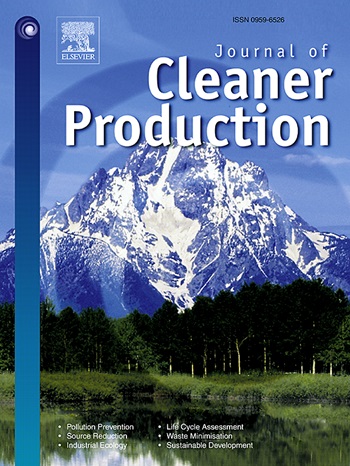Mechanism of hydration activity enhancement of typical mineral phase C12A7 in LF refining slag
IF 9.7
1区 环境科学与生态学
Q1 ENGINEERING, ENVIRONMENTAL
引用次数: 0
Abstract
As a byproduct of the secondary refining process, LF refining slag can lead to ecological and environmental issues such as soil degradation, water pollution, and threats to human health when stored for long periods. To address this problem, this study explores an effective method to enhance the hydration activity of LF refining slag by optimizing cooling process parameters to regulate the crystal structure of the typical mineral phase mayenite (Ca12Al14O33, C12A7) under medium to low temperature conditions. The results indicate that air cooling treatment significantly improves hydration activity, with the accumulative heat release over 24 hours increasing by 18.41% for pure phase C12A7 and 13.48% for LF refining slag after air cooling at 950°C and 800°C for 25 minutes respectively. The cooling treatment facilitated the transformation of C12A7 microstructure from a smooth, flat plate-like structure to a porous structure rich in crack defects. This process generates vacancies and defects within the lattice and exhibits localized amorphization induced by lattice distortion. Consequently, this leads to a reduction in the grain size of C12A7 and an increase in interplanar spacing, thereby enhancing the number of hydration active sites and permeability of LF refining slag. The findings of this study provide significant guidance for improving the resource utilization rate of LF refining slag, thereby alleviating the environmental pressures associated with waste slag storage.作为二次精炼过程中的副产品,低频精炼渣长期存放会导致土壤退化、水污染和威胁人类健康等生态和环境问题。针对这一问题,本研究探索了一种有效的方法,通过优化冷却工艺参数来调节中低温条件下典型矿物相 mayenite(Ca12Al14O33,C12A7)的晶体结构,从而提高 LF 精炼渣的水化活性。结果表明,空冷处理可显著提高水化活性,在 950°C 和 800°C 空冷 25 分钟后,纯相 C12A7 和 LF 精炼渣 24 小时内的累积放热量分别增加了 18.41% 和 13.48%。冷却处理促进了 C12A7 微观结构的转变,从光滑的平板状结构转变为富含裂纹缺陷的多孔结构。这一过程会在晶格内产生空位和缺陷,并在晶格畸变的诱导下出现局部非晶化。因此,这导致了 C12A7 晶粒尺寸的减小和平面间距的增大,从而增加了水化活性位点的数量和 LF 精炼渣的渗透性。这项研究的结果为提高 LF 精炼渣的资源利用率提供了重要指导,从而减轻了与废渣储存相关的环境压力。
本文章由计算机程序翻译,如有差异,请以英文原文为准。
求助全文
约1分钟内获得全文
求助全文
来源期刊

Journal of Cleaner Production
环境科学-工程:环境
CiteScore
20.40
自引率
9.00%
发文量
4720
审稿时长
111 days
期刊介绍:
The Journal of Cleaner Production is an international, transdisciplinary journal that addresses and discusses theoretical and practical Cleaner Production, Environmental, and Sustainability issues. It aims to help societies become more sustainable by focusing on the concept of 'Cleaner Production', which aims at preventing waste production and increasing efficiencies in energy, water, resources, and human capital use. The journal serves as a platform for corporations, governments, education institutions, regions, and societies to engage in discussions and research related to Cleaner Production, environmental, and sustainability practices.
 求助内容:
求助内容: 应助结果提醒方式:
应助结果提醒方式:


